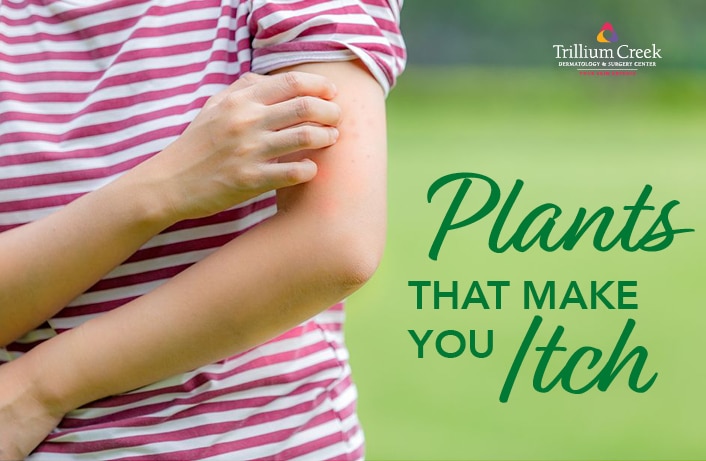
Poison ivy is the most common cause of contact dermatitis in the United States, but a host of other common plants are capable of producing skin reactions.
For most, knowledge of hazardous plants is limited to the phrase, “leaves of three, leave them be.” However, despite widespread awareness of a few common culprits, many casual outdoor enthusiasts may find themselves with an itchy souvenir following an encounter with a flower or shrub.
While poison ivy is the most common cause of contact dermatitis in the United States, a host of other common plants are capable of producing skin reactions.
Your backyard can be home to a variety of potentially hazardous plants. The following homegrown crops have been known to cause skin reactions:
- Strawberry
- Garlic
- Tomato
- Comfrey
- Borage
- Rose Hips
- Hot Peppers
- Tulip Bulbs
- Daffodil Bulbs
- Hyacinth Bulbs
In addition, combined exposure to citrus fruit and sunlight should be avoided. Lemons, limes, clementines, oranges, and grapefruit all contain light-sensitizing chemicals that can cause a rash.
Prevention
Plastic bags are your friends!
Use plastic or heavy shopping bags to pull plants from the soil, replacing the bags with the pulling of each plant. Plastic bags can also be used to cover arms for additional protection during the removal process.
Get to the root.
Any lingering shoots or seedlings can be killed with white vinegar.
Cover up
Keep skin as covered as possible to avoid any potential contact. Wear long-sleeved shirts and pants.
Rinse, rinse, rinse
After removal or exposure to poisonous plants, rinse any exposed skin with water immediately (avoid soap or harsh scrubbing), and wash clothes immediately.



